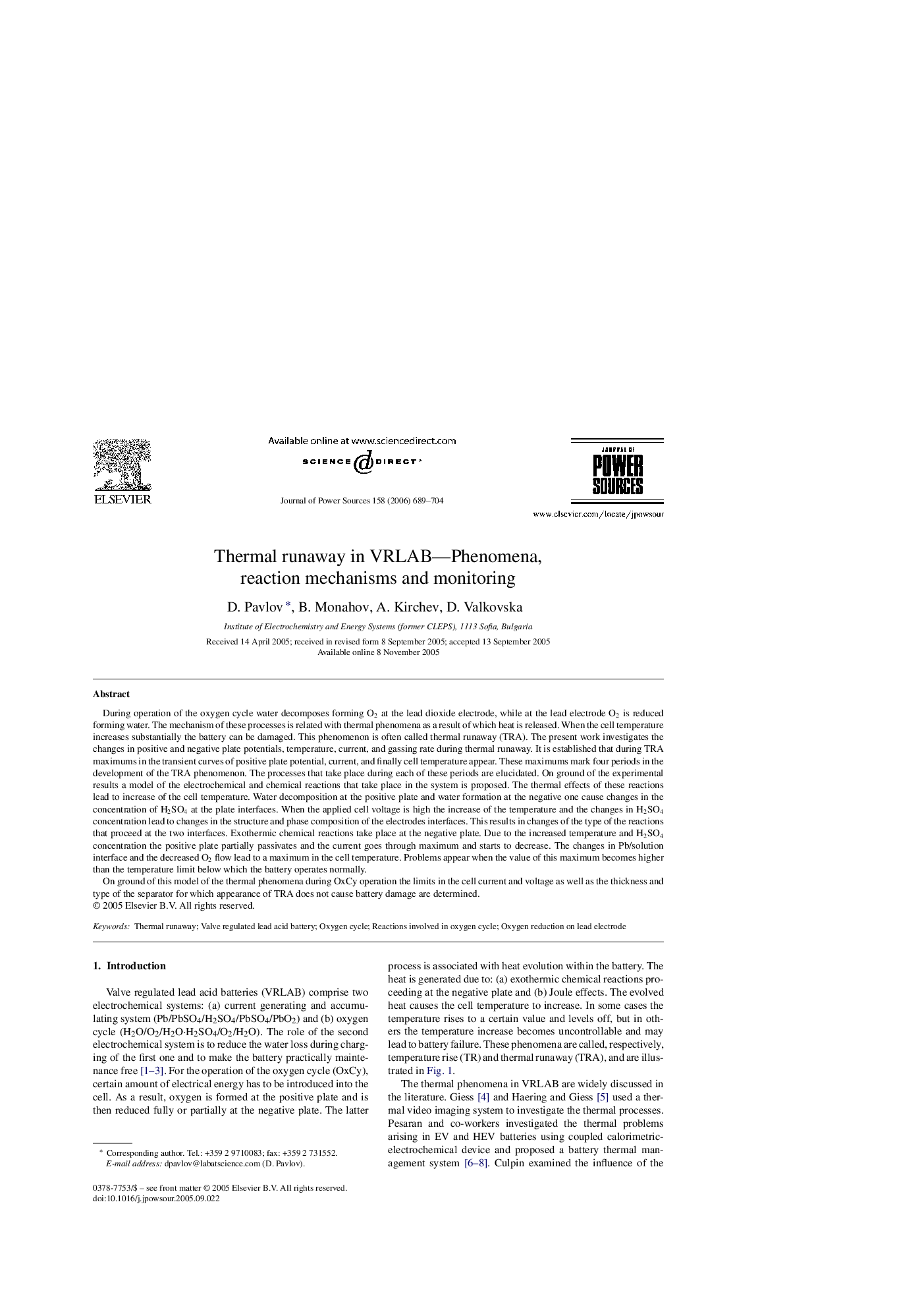| Article ID | Journal | Published Year | Pages | File Type |
|---|---|---|---|---|
| 1287622 | Journal of Power Sources | 2006 | 16 Pages |
During operation of the oxygen cycle water decomposes forming O2 at the lead dioxide electrode, while at the lead electrode O2 is reduced forming water. The mechanism of these processes is related with thermal phenomena as a result of which heat is released. When the cell temperature increases substantially the battery can be damaged. This phenomenon is often called thermal runaway (TRA). The present work investigates the changes in positive and negative plate potentials, temperature, current, and gassing rate during thermal runaway. It is established that during TRA maximums in the transient curves of positive plate potential, current, and finally cell temperature appear. These maximums mark four periods in the development of the TRA phenomenon. The processes that take place during each of these periods are elucidated. On ground of the experimental results a model of the electrochemical and chemical reactions that take place in the system is proposed. The thermal effects of these reactions lead to increase of the cell temperature. Water decomposition at the positive plate and water formation at the negative one cause changes in the concentration of H2SO4 at the plate interfaces. When the applied cell voltage is high the increase of the temperature and the changes in H2SO4 concentration lead to changes in the structure and phase composition of the electrodes interfaces. This results in changes of the type of the reactions that proceed at the two interfaces. Exothermic chemical reactions take place at the negative plate. Due to the increased temperature and H2SO4 concentration the positive plate partially passivates and the current goes through maximum and starts to decrease. The changes in Pb/solution interface and the decreased O2 flow lead to a maximum in the cell temperature. Problems appear when the value of this maximum becomes higher than the temperature limit below which the battery operates normally.On ground of this model of the thermal phenomena during OxCy operation the limits in the cell current and voltage as well as the thickness and type of the separator for which appearance of TRA does not cause battery damage are determined.
